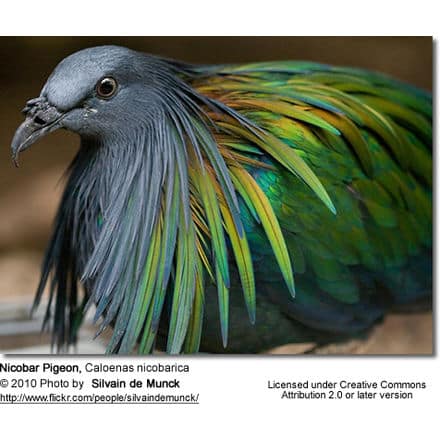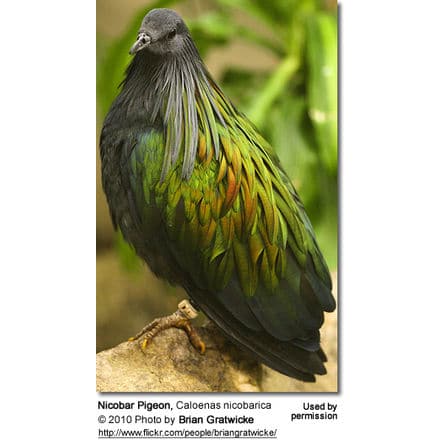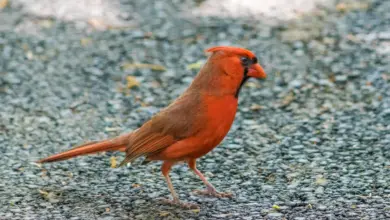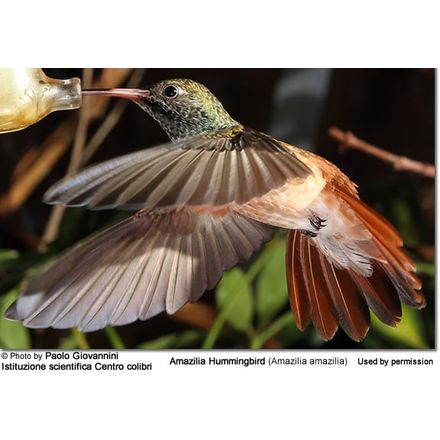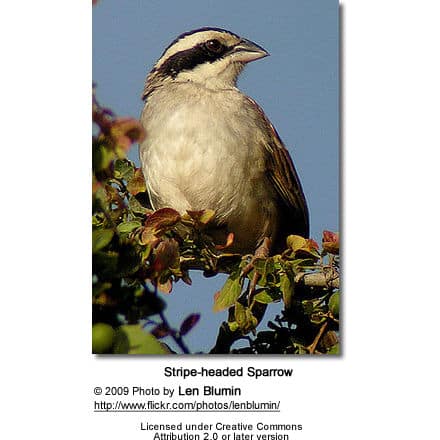Nicobar Pigeons
The Nicobar Pigeons (Caloenas nicobarica) are found on small islands and in coastal regions from the Nicobar Islands, east through the Malay Archipelago, to the Solomons and Palau.
It is the only living member of the genus Caloenas.
Description:
This is a large pigeon, measuring 40 cm in length.
The head is grey, like the upper neck plumage, which turns into green, and copper hackles towards the breast. The breasts and remiges are dark grey. The tail is very short and pure white. The rest of its plumage is metallic green. The core of the dark bill forms a small blackish knob; the strong legs and feet are dull red. The irides are dark.
Females are slightly smaller than males; they have a smaller bill knob, shorter hackles, and browner underparts. Immature birds have a black tails and lack almost all iridescence.
There is hardly any variation across the birds’ wide range. Even the Palau subspecies C. n. pelewensis has merely shorter neck hackles but is otherwise almost identical
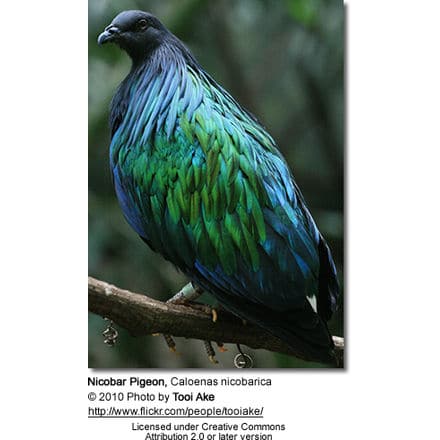
Distribution / Range
Its breeding range encompasses the Andaman and Nicobar Islands of India, the Mergui Archipelago of Myanmar, offshore islands of south-western Thailand, Peninsular Malaysia, southern Cambodia, and Vietnam, and many of the small islands between Sumatra, the Philippines, and the Solomon Islands.
On Palau, the only distinct subspecies is C. n. pelewensis is found.
It roams in flocks from island to island, usually sleeping on offshore islets where no predators occur, and spends the day in areas with better food availability, not shying away from areas inhabited by humans. Its food consists of seeds, fruit, and buds, and it is attracted to areas where grain is available. A gizzard stone helps to grind up hard food items. Its flight is quick, with regular beats and an occasional sharp flick of the wings, as is characteristic of pigeons in general. Unlike other pigeons, groups tend to fly in columns or single file, not in a loose flock. The white tail is prominent in flight when seen from behind and may serve as a sort of “taillight”, keeping flocks together when crossing the sea at dawn or dusk. The young birds’ lack of a whitetail is a signal of their immaturity visible to conspecifics – to an adult Nicobar Pigeon, it is obvious at a glance which flocks members are neither potential mates, nor potential competitors for mates, nor old enough to safely guide a flock from one island to another.
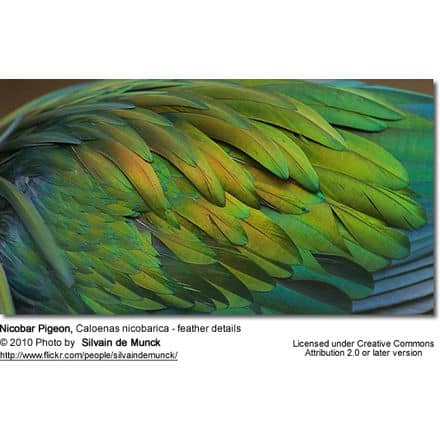
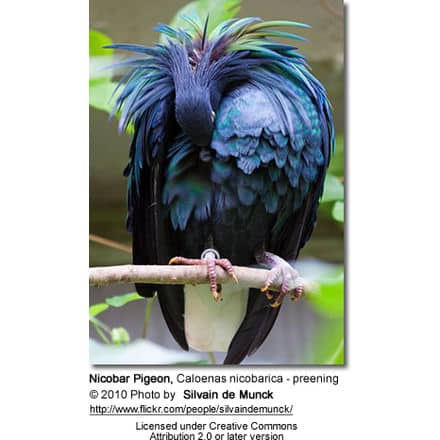
Call / Vocalization:
This is not a very vocal species, giving a low-pitched repetitive call that sounds like coo-coo-coo.
Nesting / Breeding:
This species nests in dense forests on offshore islets, often in large colonies. It builds a loose stick nest in a tree. It lays one elliptical faintly blue-tinged white egg.
Status / Conservation
They are hunted in considerable numbers for food, and also for their gizzard stone which is used in jewelry. The species is also trapped for the local pet market, but as it is on CITES Appendix I, such trade is generally illegal. Internationally, captive breeding can supply the birds demanded by zoos, where this attractive and unusual bird is often seen. Direct exploitation of the species, even including the illegal trade, might be sustainable on its own; however, its available nesting habitat is decreasing. For one thing, the offshore islets that it requires are often logged for plantations, destroyed by construction activity, or polluted by nearby industries or harbors. Also, increased travel introduces predators to more and more of the breeding sites, and colonies may be driven to desert such locations or be destroyed outright. Though the bird is widely distributed and in some locations very common – even on small Palau it is still reasonably plentiful, with an estimated 1,000 adult birds remaining –, its long-term future is increasingly being jeopardized. For these reasons, the IUCN considers C. nicobarica a Near Threatened species.
On the Nicobar Islands (which are referred to in their common and scientific names), the most significant colony in our time was found on Batti Malv, a remote wildlife sanctuary between Car Nicobar and Teressa. The 2004 Indian Ocean tsunami caused massive damage to the Nicobar Islands, and it is still not quite clear to what extent Batti Malv was affected. But while everything on some islets in the Great Nicobar Biosphere Reserve was destroyed, Batti Malv lighthouse – a skeletal tower a dozen meters high, standing a few meters ASL at the highest point of the low-lying island – was little-damaged and put back in operation by the survey ship INS Sandhayak less than one month after the disaster.

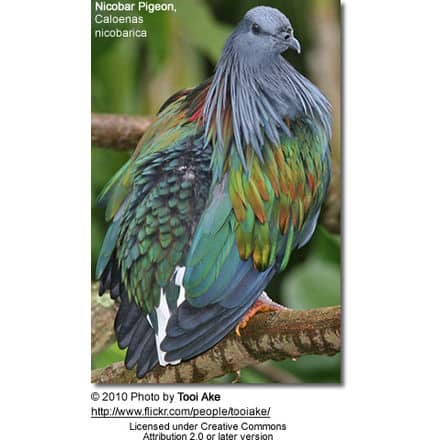
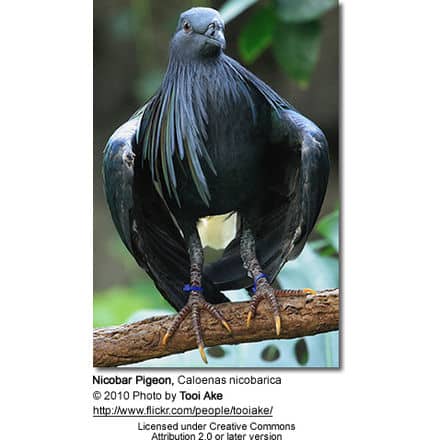
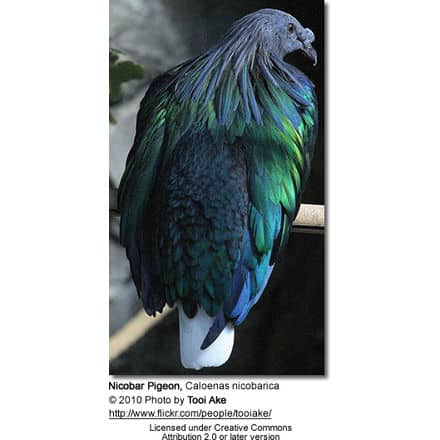
(Columbidae – Please see also Doves)
Pigeon Information … Intelligence and Amazing Facts … Species / Breeds … Breed Photo Gallery
